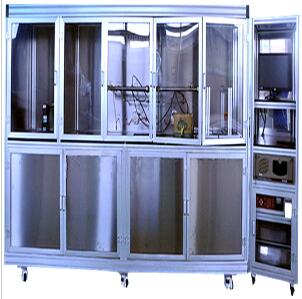Describes test equipment or methods involving repeated cycles or passes to simulate long-term use an
WhatsApp : +86 13816217984
Email : info@qinsun-lab.com

Meet the standard:
ISO 16889
ASTM D5170 ASTM D2060
ASTM F3445 ISO 3724
Product Introduction:
Many materials and components in various industries are subjected to repeated cycles of operation, stress, or exposure. Evaluating their performance and durability requires testing methods that go beyond single-event or static measurements. "Multiple Passes Through Tester" refers to systems designed to replicate these repetitive actions in a controlled laboratory environment.
The fundamental principle involves setting up a test where the item under evaluation undergoes a specific interaction or process, and this process is then repeated for a large number of cycles or "passes." The test aims to accelerate the effects of long-term use, allowing manufacturers and researchers to assess degradation, wear, fatigue, or the ability to maintain performance over time.
Examples of testers that utilize the "multiple passes through" principle include:
Hydraulic Filter Multi-pass Testers: Hydraulic fluid containing contaminant is repeatedly circulated through a filter element to measure its particle removal efficiency and dirt holding capacity over time.
Zipper Fatigue Testers: The zipper slider is repeatedly opened and closed along the zipper chain to assess its durability and functional life.
Hook and Loop Fastener Fatigue Testers: Hook and loop tapes are repeatedly engaged and disengaged to evaluate the degradation of closure strength.
Shoe Bending Testers: Complete shoes or shoe components are repeatedly flexed to assess their resistance to bending fatigue.
Flow Fatigue Testers (e.g., for filters): Components are subjected to repeated cycles of pressure or flow to evaluate structural fatigue.
In these testers, the number of cycles or passes is carefully controlled and monitored. Performance parameters are measured at intervals or at the end of the test, and failure criteria are typically defined based on changes in performance, appearance, or structural integrity.
This testing approach is used in laboratories for:
Evaluating the long-term durability and wear resistance of materials and components under cyclic stress or exposure.
Predicting the service life and reliability of products subjected to repetitive actions.
Assessing the fatigue resistance of mechanical components.
Evaluating the sustained performance of filtration or separation systems over their life.
Quality control to ensure products withstand expected levels of use.
Research and development to improve the durability and lifespan of products.
Product Advantages:
Simulates the effects of long-term, repetitive use in an accelerated laboratory setting.
Provides objective data on durability, fatigue, and wear.
Essential for predicting service life and ensuring product reliability.
Allows for controlled evaluation of performance degradation over time.
Supports research and development of more robust and long-lasting products.
Standard compliant test methods are available for many applications of this principle.

Disclaimer: The above content is for reference and communication only among industry insiders, and does not guarantee its accuracy or completeness. According to relevant laws and regulations and the regulations of this website, units or individuals who purchase related items should obtain valid qualifications and qualification conditions.
Company Phone
+86-21-6420 0566
Working hours
Monday to Friday
Mobile phone:
13816217984
Email:
info@qinsun-lab.com
